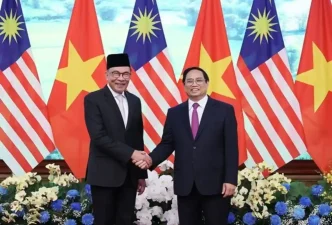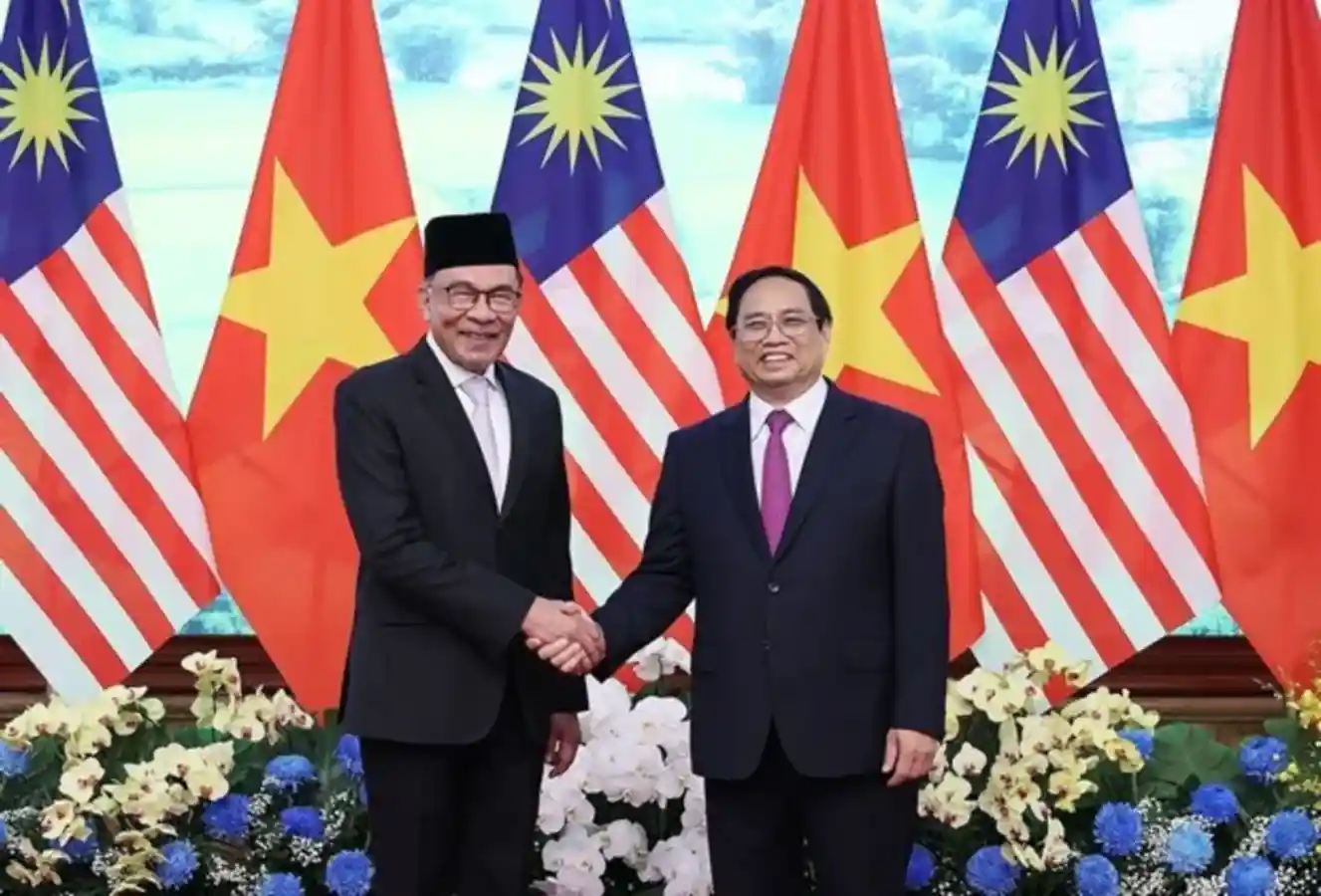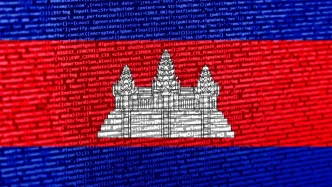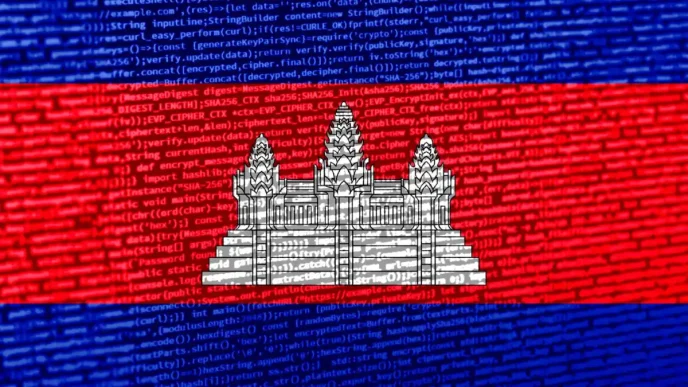In a significant step toward deepening ties within the ASEAN bloc, the prime ministers of Vietnam and Malaysia have hailed recent talks aimed at boosting cooperation across trade, security, and cultural exchange. The discussions, held in Kuala Lumpur, underscored a mutual commitment to addressing shared regional challenges, from economic recovery to maritime disputes in the South China Sea. As both nations navigate a complex geopolitical landscape, this renewed partnership signals a strategic alignment with broader implications for Southeast Asia.
A Shared Vision for Economic Growth
The talks between Vietnamese Prime Minister Pham Minh Chinh and Malaysian Prime Minister Anwar Ibrahim focused heavily on economic collaboration, with both leaders expressing optimism about elevating bilateral trade. Vietnam and Malaysia, key players in ASEAN’s economic framework, have seen trade volumes grow steadily in recent years, with current figures hovering around 15 billion Malaysian Ringgit (US$3.2 billion) annually. Agreements to streamline agricultural exports, particularly Vietnam’s rice and Malaysia’s palm oil, were highlighted as immediate priorities.
Beyond trade, the leaders discussed joint ventures in technology and renewable energy, sectors critical to both nations’ long-term development goals. “We see immense potential in collaborating on green energy initiatives” said Anwar Ibrahim during a joint press conference. Vietnam, with its burgeoning tech sector in cities like Ho Chi Minh, and Malaysia, with its established hubs in Kuala Lumpur, stand to benefit from shared innovation. Analysts suggest that such partnerships could position both countries as leaders in sustainable development within ASEAN, though challenges like regulatory harmonization remain.
Security and Regional Stability
A significant portion of the dialogue centered on security cooperation, particularly in light of ongoing tensions in the South China Sea. Both Vietnam and Malaysia have overlapping claims in the disputed waters, where China’s assertive posture has escalated regional concerns. While neither leader directly criticized Beijing during public statements, their commitment to upholding international law and ASEAN’s collective stance was clear. “Our partnership is rooted in mutual respect for sovereignty and stability” said Pham Minh Chinh, emphasizing the need for dialogue over confrontation.
The talks also addressed counterterrorism and cybersecurity, areas where both nations face growing threats. Malaysia’s experience in combating extremism in its southern regions and Vietnam’s recent cybersecurity reforms under the 2018 Law on Cybersecurity provide a foundation for collaboration. Experts note that joint training programs and intelligence sharing could emerge as tangible outcomes, though specifics remain under wraps pending further negotiations.
Cultural and People-to-People Ties
Beyond economics and security, the prime ministers underscored the importance of cultural exchange as a pillar of their relationship. Malaysia’s diverse population includes a significant ethnic Vietnamese community, while Vietnam hosts Malaysian students and tourists drawn to its historical sites like Ha Noi and Da Nang. Initiatives to promote language programs and cultural festivals were discussed, with both leaders viewing these as tools to foster mutual understanding.
“Our people are the heart of this partnership” said Anwar Ibrahim, pointing to plans for increased student exchanges. Such efforts, while symbolic, carry weight in a region often divided by historical grievances. For Vietnam, strengthening cultural ties aligns with its broader push to enhance soft power, while Malaysia sees it as a means to bolster domestic support for closer ASEAN integration.
Geopolitical Implications in ASEAN
The timing of these talks is notable, as ASEAN grapples with internal divisions over issues like the Myanmar crisis and external pressures from major powers like the United States and China. Vietnam and Malaysia, though not the bloc’s largest economies, wield influence through their strategic locations and active diplomacy. Their alignment could serve as a counterbalance to more dominant players within ASEAN, offering a model of cooperation that prioritizes smaller, bilateral agreements over unwieldy multilateral ones.
Dr. Le Thu Huong, a Southeast Asia analyst based in Singapore, suggests that this partnership may encourage other ASEAN members to pursue similar bilateral engagements. “Vietnam and Malaysia are showing that practical, issue-specific cooperation can yield results without waiting for consensus across the entire bloc” she noted in a recent interview with Reuters. If successful, this approach could reshape how ASEAN addresses regional challenges, though skeptics warn that entrenched rivalries may limit its impact.
Challenges and Uncertainties Ahead
Despite the optimism, hurdles remain. Economic disparities between the two nations—Vietnam’s GDP per capita lags behind Malaysia’s—could complicate efforts to balance trade benefits. Additionally, domestic political pressures may constrain both leaders’ ability to implement ambitious reforms. In Vietnam, the Communist Party’s tight control over policy often slows decision-making, while in Malaysia, Anwar Ibrahim faces a fractious coalition government that could undermine bold foreign policy moves.
Maritime disputes pose another risk. While both nations share concerns about the South China Sea, their specific claims occasionally overlap, creating potential friction. Analysts caution that without clear mechanisms for dispute resolution, even minor incidents could strain the newfound goodwill. For now, both leaders appear committed to dialogue, but the path forward will test their diplomatic acumen.
Broader Economic Context
Economically, the Vietnam-Malaysia partnership fits into a larger trend of intra-ASEAN trade growth, which has become a buffer against global uncertainties like the US-China trade war. Vietnam’s manufacturing boom, driven by foreign investment, complements Malaysia’s focus on high-value industries like electronics. Joint initiatives could attract further investment, though both nations must address infrastructure gaps—Vietnam’s overburdened ports and Malaysia’s uneven rural development—to fully capitalize on their potential.
Trade data from ASEAN’s 2024 reports indicate that intra-regional trade accounts for nearly 25% of the bloc’s total commerce, a figure both leaders aim to increase. Tariff reductions and streamlined customs procedures discussed during the talks could serve as a blueprint for other ASEAN pairings, though implementation timelines remain vague. For businesses in Ho Chi Minh and Kuala Lumpur, the prospect of reduced costs is tantalizing, yet tempered by bureaucratic realities.
Public Sentiment and Regional Reactions
Public reaction to the talks has been cautiously positive, based on sentiments shared on platforms like X. Vietnamese netizens expressed hope for job opportunities stemming from Malaysian investment, while Malaysians highlighted the potential for affordable Vietnamese goods. However, some voiced skepticism about tangible outcomes, with one X user noting, “Talks are easy, results are hard.” Such wariness reflects broader regional fatigue with diplomatic fanfare that often fails to deliver.
Neighboring countries have taken note of the Vietnam-Malaysia dialogue, with Thailand and Indonesia reportedly monitoring developments. For Thailand, which shares a border with Malaysia, any shift in regional security dynamics could prompt adjustments to its own policies. Indonesia, as ASEAN’s de facto leader, may see the partnership as either a complement or challenge to its influence, depending on how it evolves.
As Vietnam and Malaysia chart this new course, the region watches closely. Their ability to translate commitments into action will not only shape their bilateral relationship but also test ASEAN’s capacity for cohesion in an era of uncertainty. For now, the talks represent a promising step—one that could redefine cooperation in Southeast Asia if the momentum holds.
















